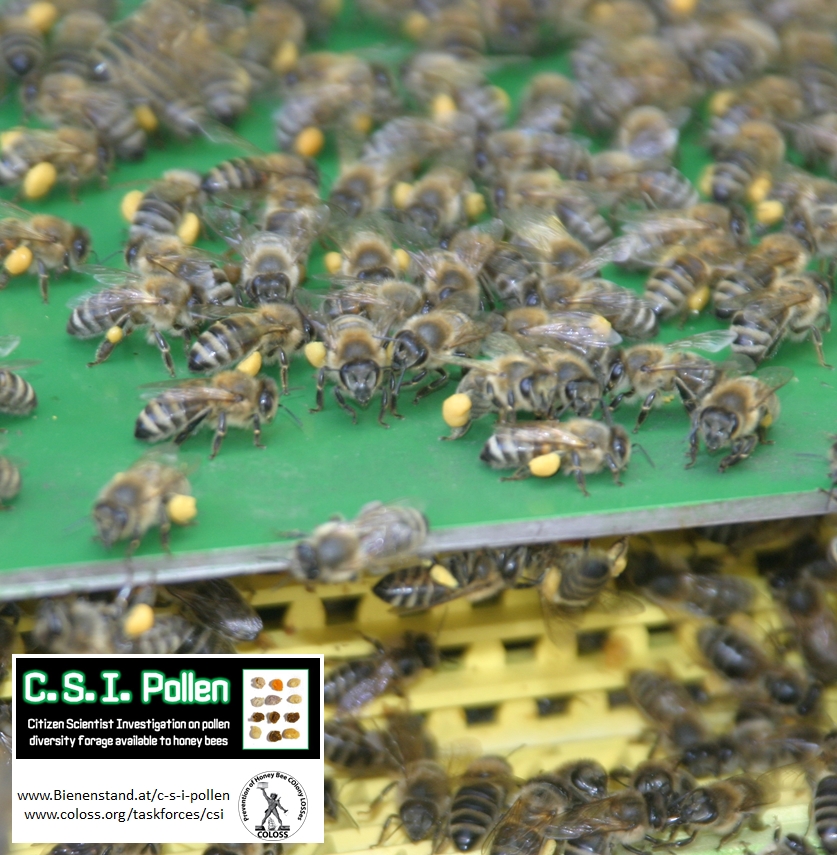A selection of pictures taken by citizen scientists from Austria and Germany.
Eine Auswahl einiger von Österreichischen und Deutschen Teilnehmern gemachter Fotos.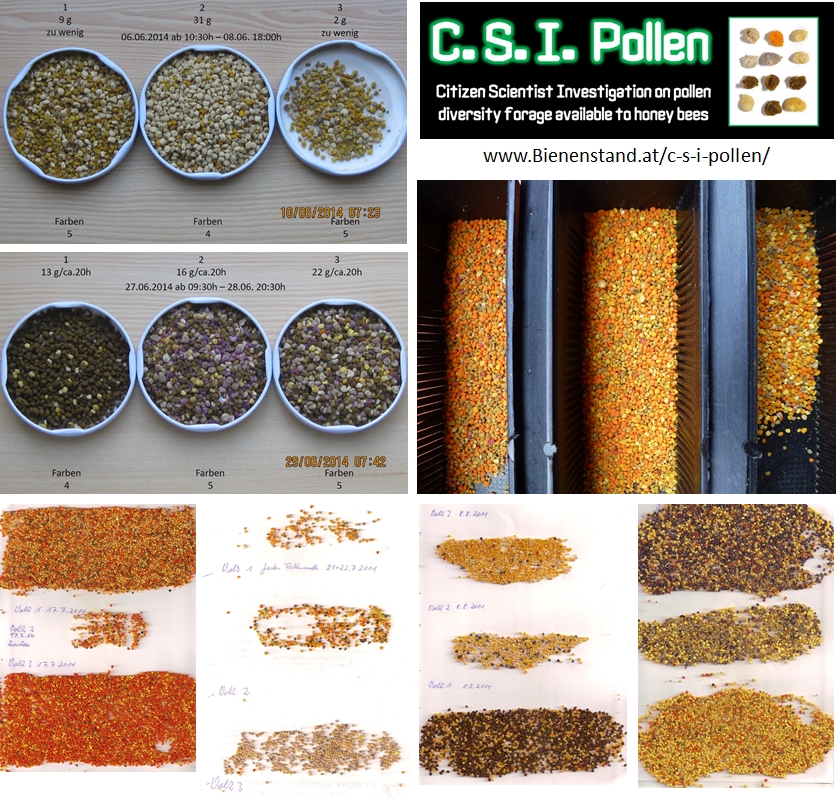
The next two pictures show a C.S.I. sampling apiary I visited in July 2014 in Styria, Austria. Nice labelling of colonies right in the drive-up to their operation.
Diese schön beschrifteten und gepflegten Probenvölker, direkt an der Auffahrt zur Imkerei, habe ich bei einem Besuch bei Teilnehmern aus der Steiermark fotografiert.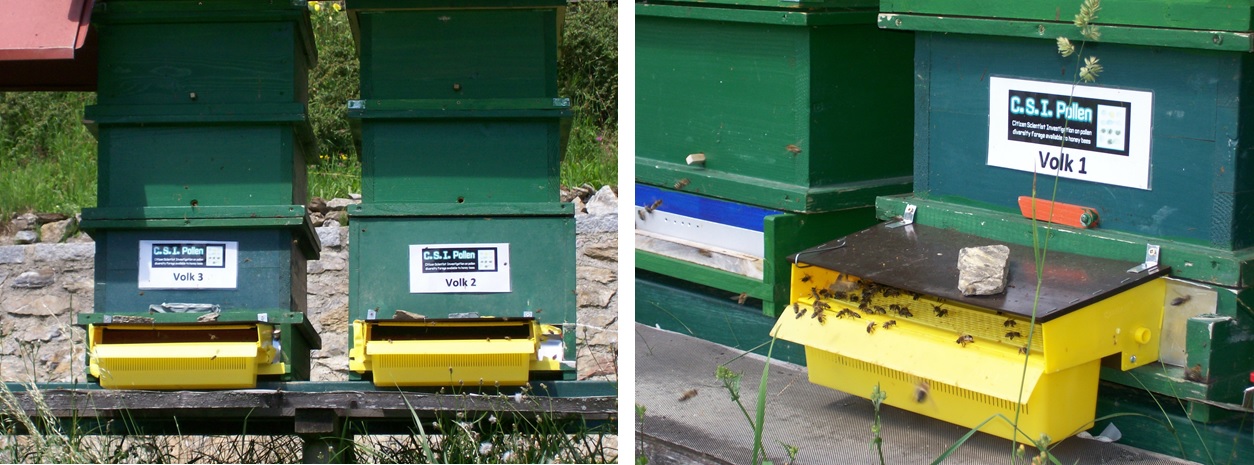
Nice picture from Kerstin Gründel, Mölmsche Honey, Germany.
Schönes Bild von Kerstin Gründel, Mölmsche Honig, Deutschland.
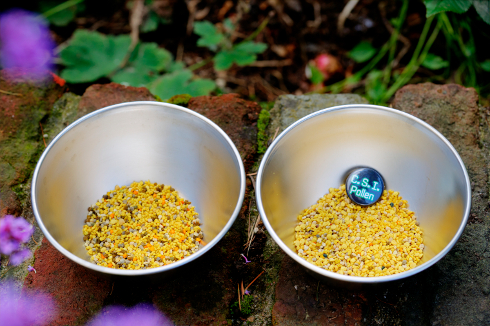
The most easiest way to dry pollen samples – a warm and dry place like a window bench.
Pollen-Trocknen leicht gemacht – eine warme und trockene Fensterbank.
A selection of pictures taken by citizen scientists from the Netherlands.
Eine Auswahl einiger von Holländischen Teilnehmern gemachter Fotos.
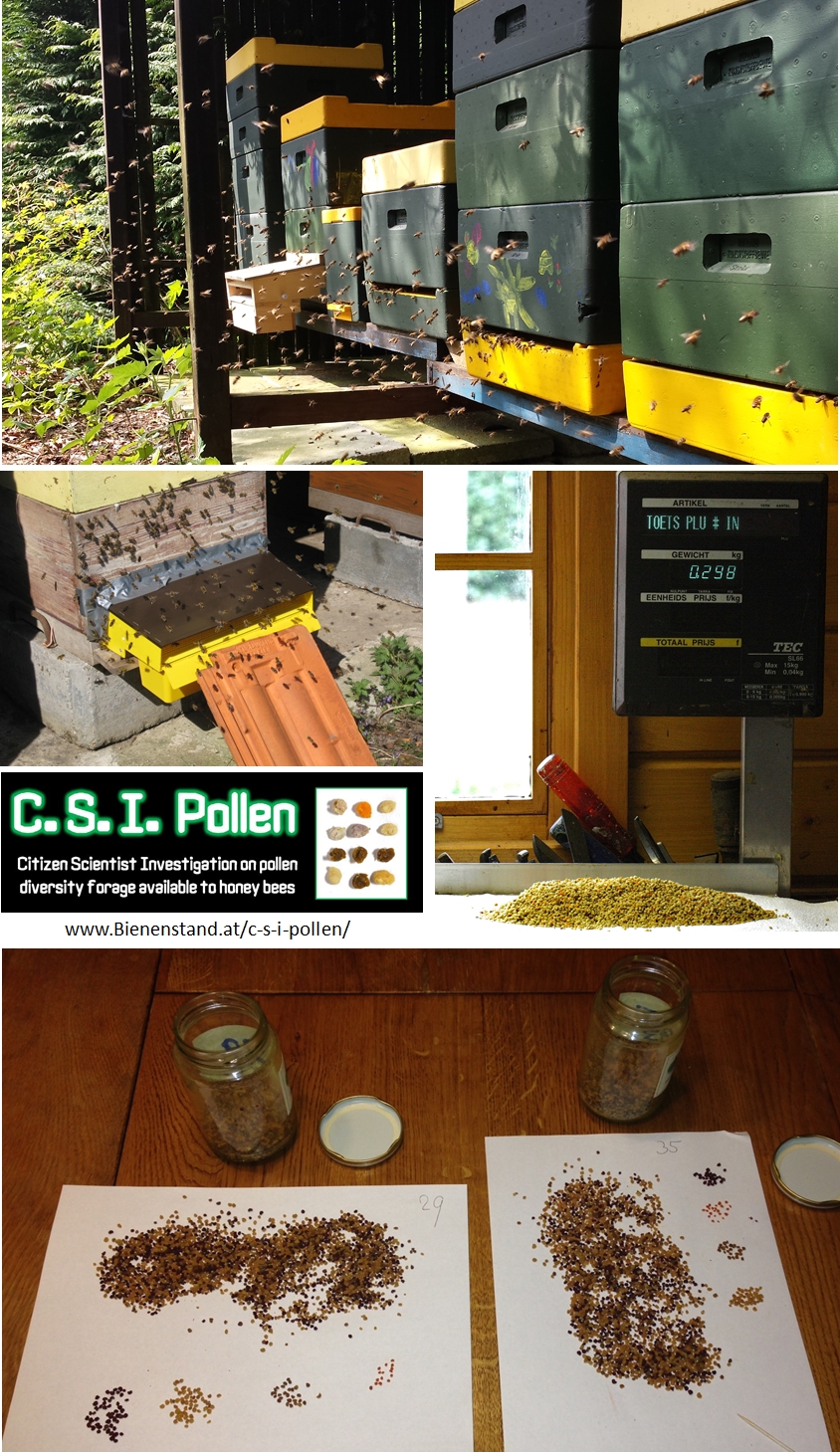
Pollen colour diversity from the Netherlands.
Pollenfarben Vielfalt in den Niederlanden.
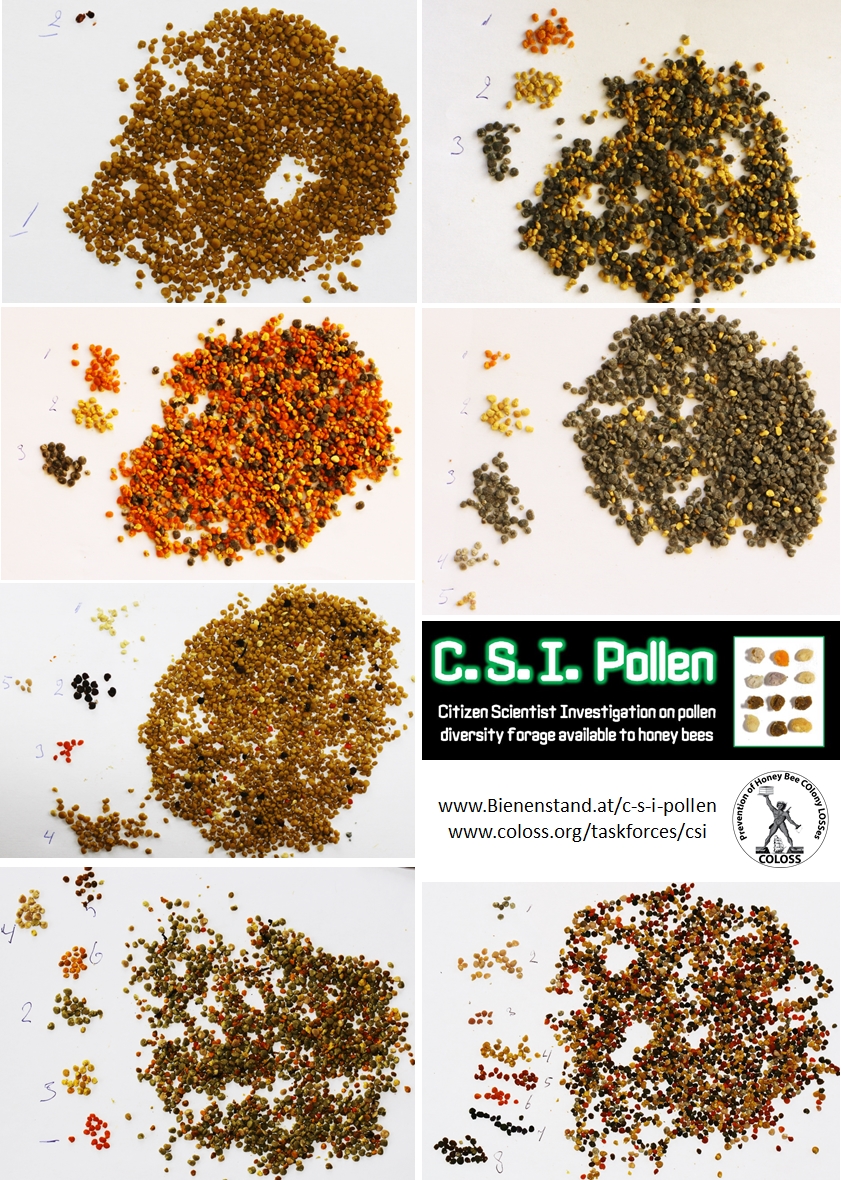
A nice example for communicating C.S.I. Pollen and biodiversity to the public, here at „Forum de l’Environnement“ in Poitiers, France. Well done, Jean-François.
Ein schönes Beispiel wie man C.S.I. Pollen und Biodiversität unter die Leute bringen kann, hier beim „Forum de l’Environnement“ in Poitiers, Frankreich. Gut gemacht, Jean-François.
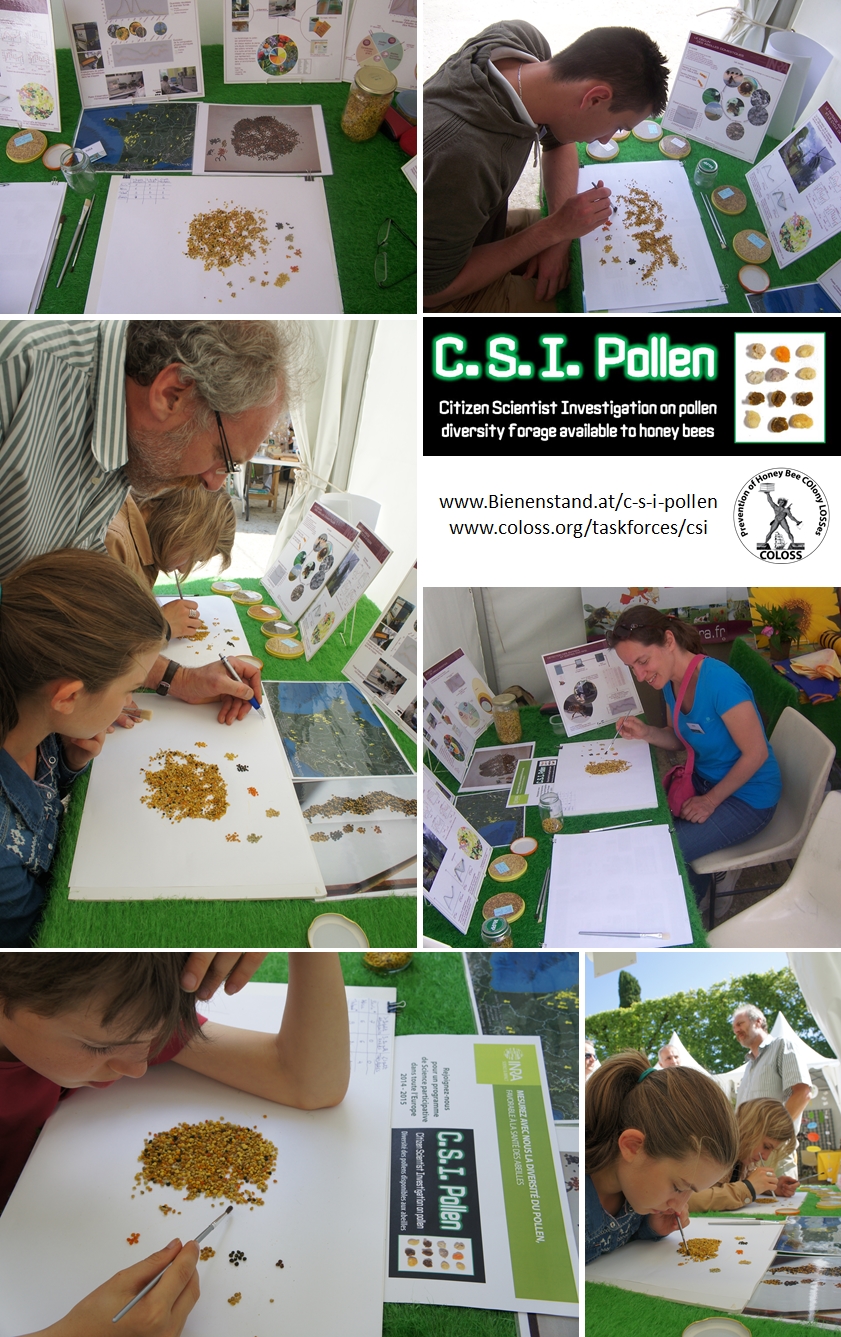
Again, some nice pics from French C.S.I. Pollen participants, very elegant! Although, you achieve better examination of colours under daylight conditions!
Weitere Bilder von C.S.I. Pollen Teilnehmern aus Frankreich – sehr elegant! Allerdings lassen sich die Farben der Pollen bei Tageslicht besser unterscheiden!
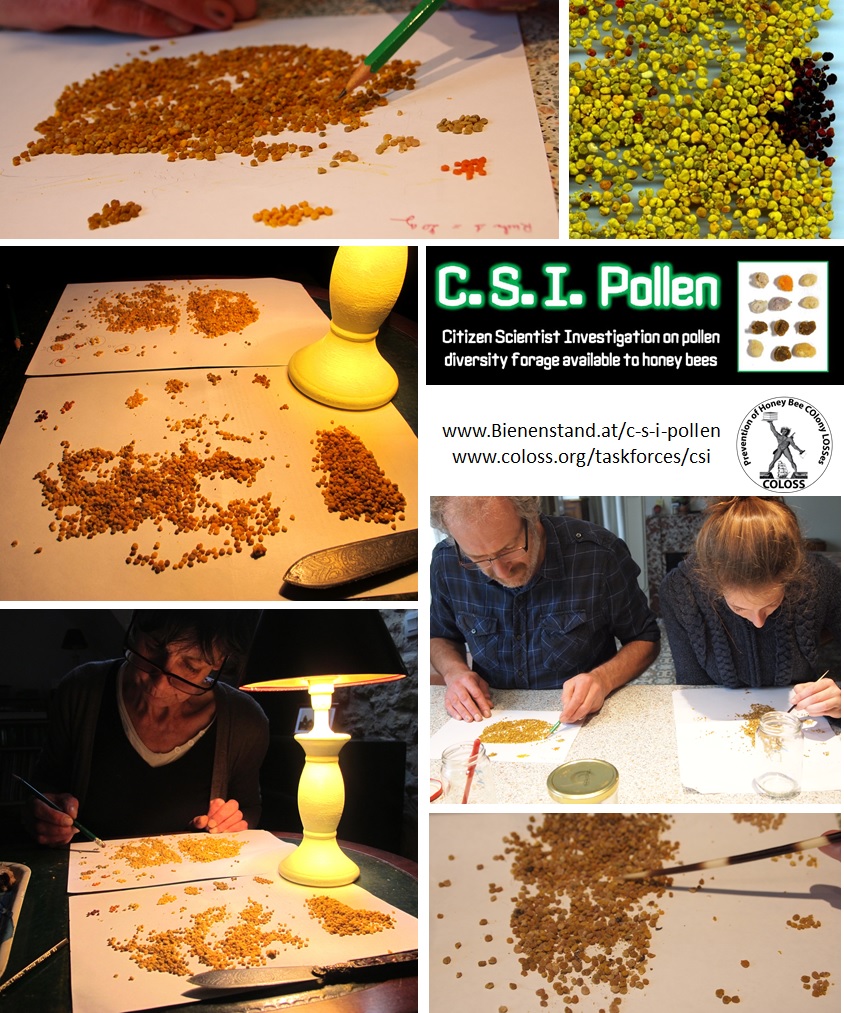
We also have a scientist in Morocco! Wir haben sogar Teilnehmer in Marokko!
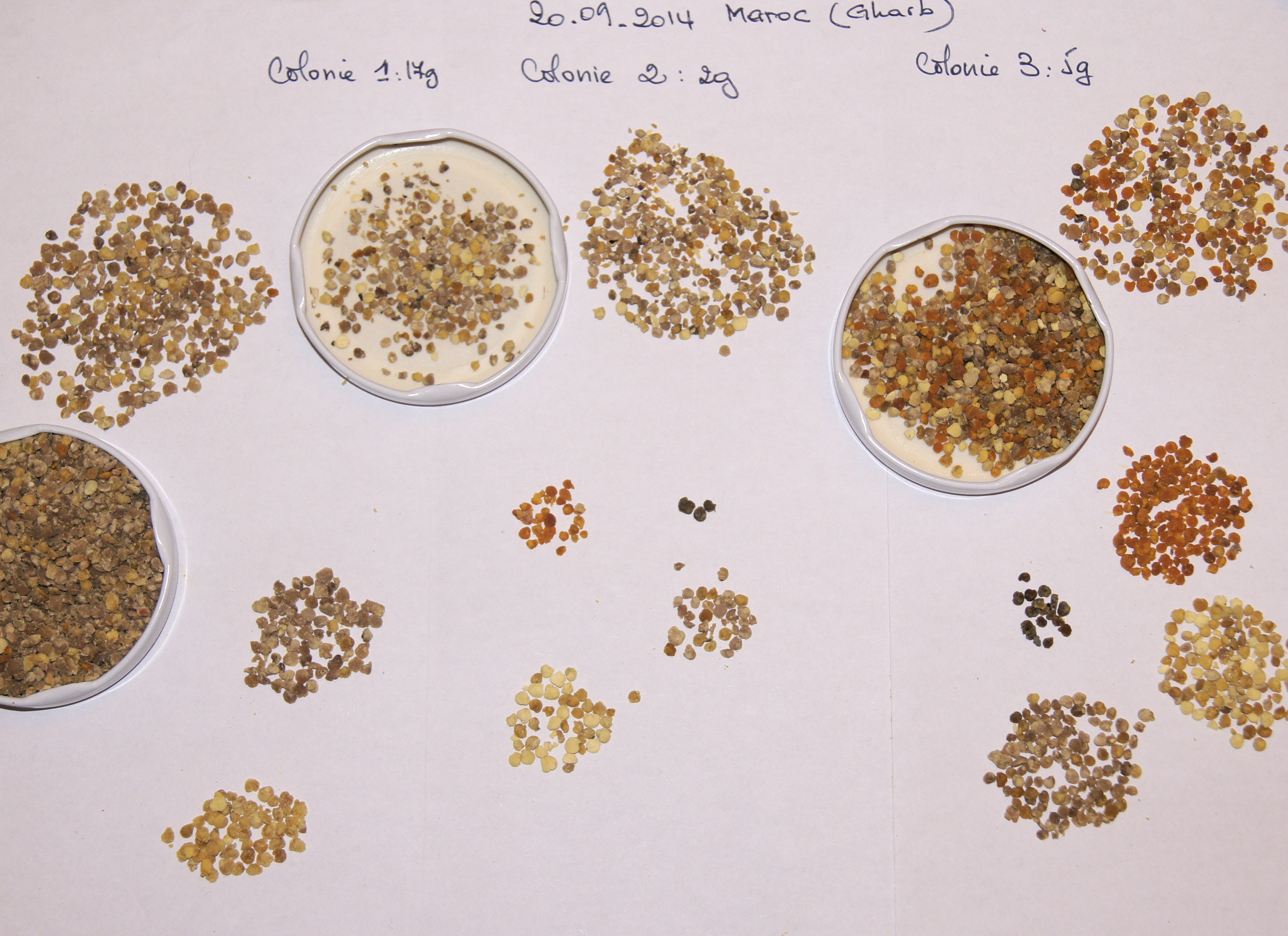
Pollen samples from England, close to the river Thames. Retention samples of every colour are kept in 96 well microtiter plates for microscopy. True citizen science!
Pollenproben aus England, nahe der Themsemündung. Rückhalteproben von jeder Pollenhöschenfarbe werden in Mikrotiterplatten zum Mikroskopieren aufbewahrt. Echter Forschergeist!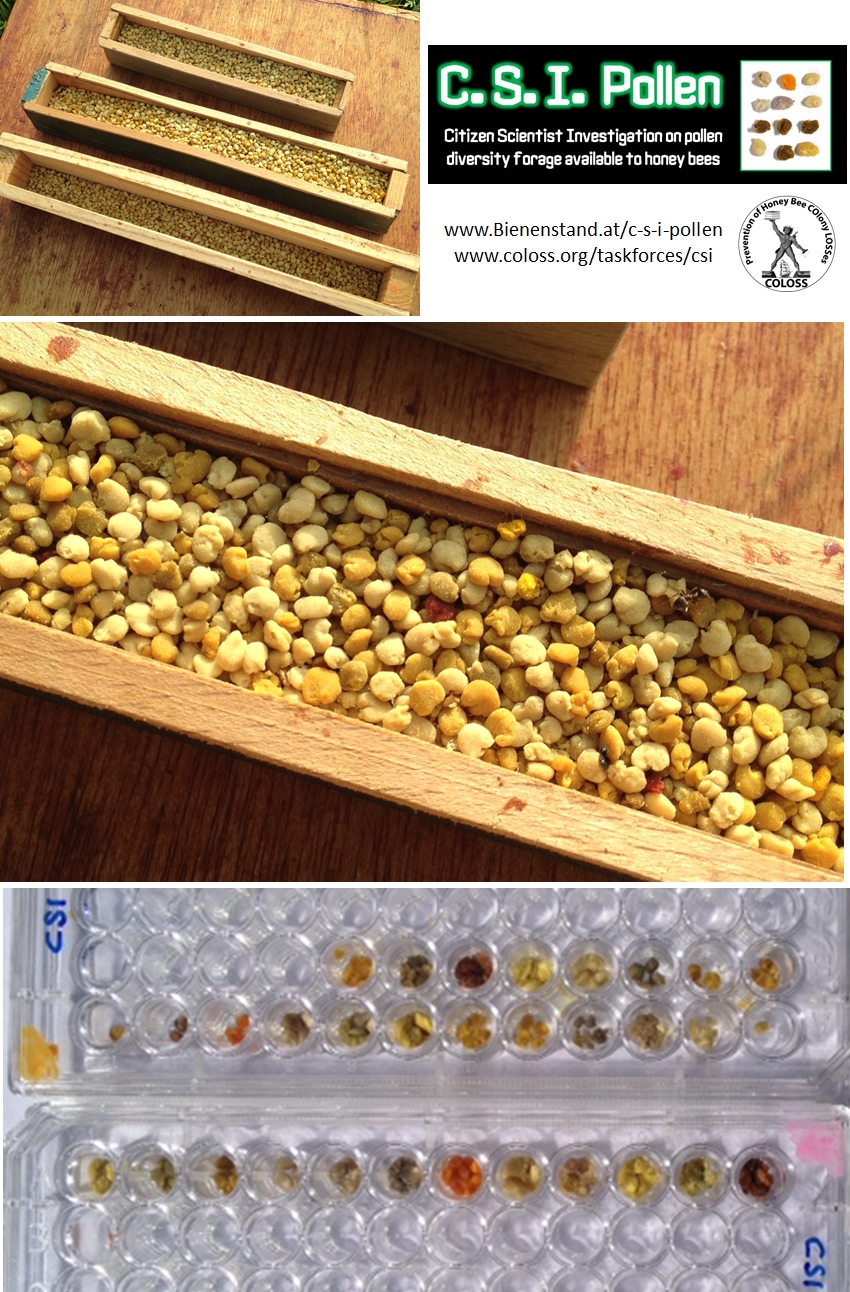
Junior citizen scientist from Italy.
Jungforscherin aus Italien.
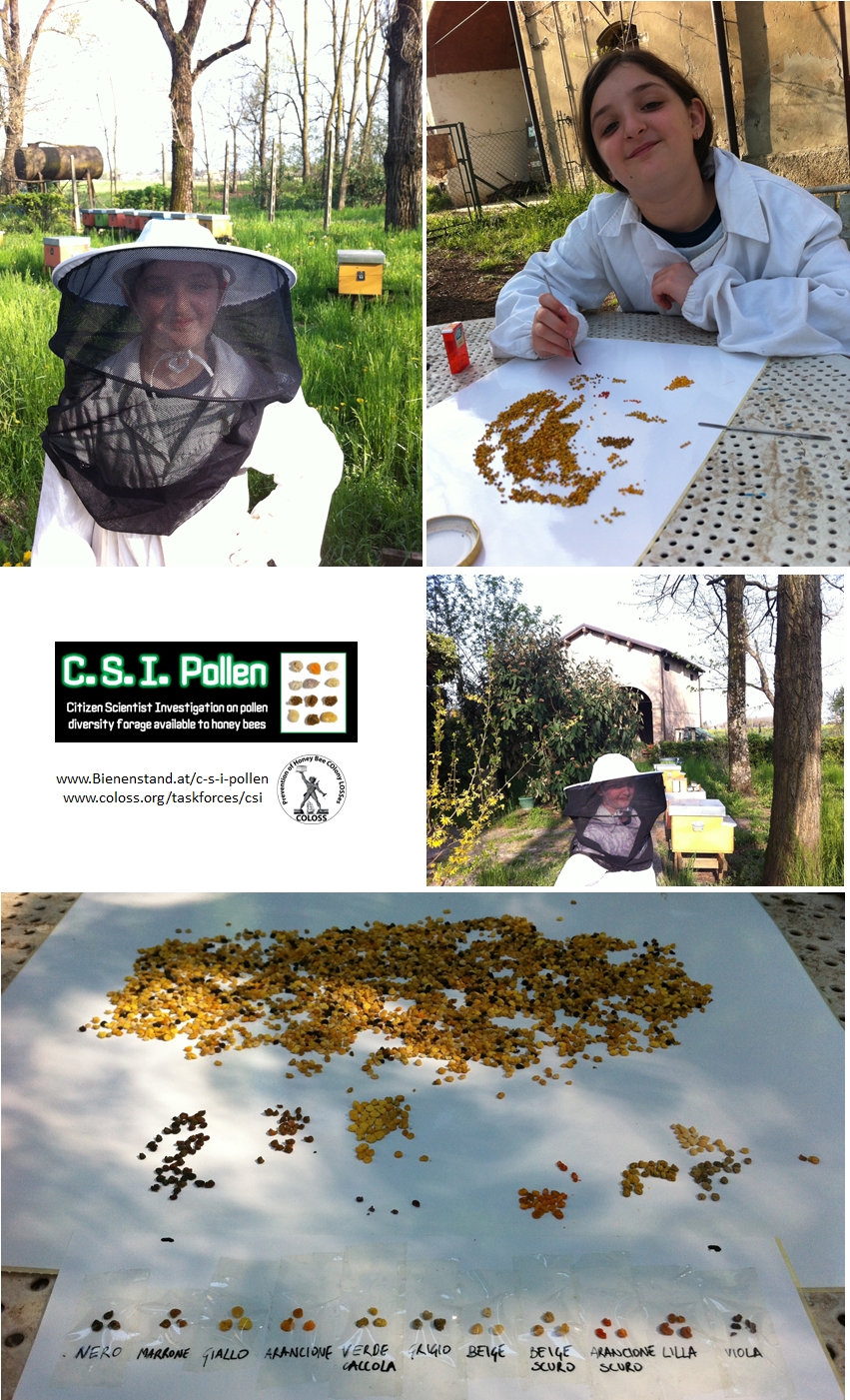
Pollen colour diversity in June from Carinthia, Austria (near Millstättersee).
Pollenfarbvielfalt im Juni aus Kärnten, Österreich (nähe Millstättersee).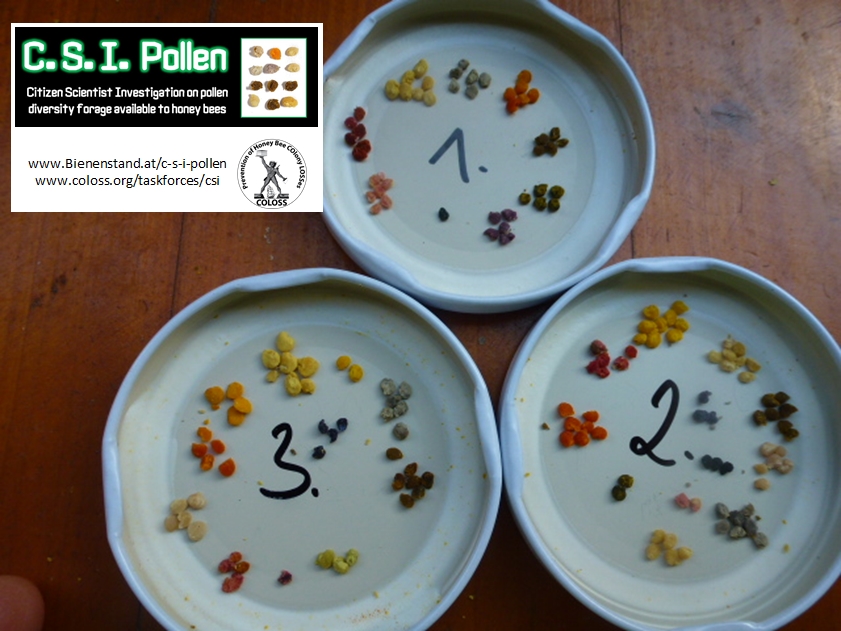
And again from same apiary, other sampling.
Und nochmal der selbe Standort zu einem anderen Sammeltermin.
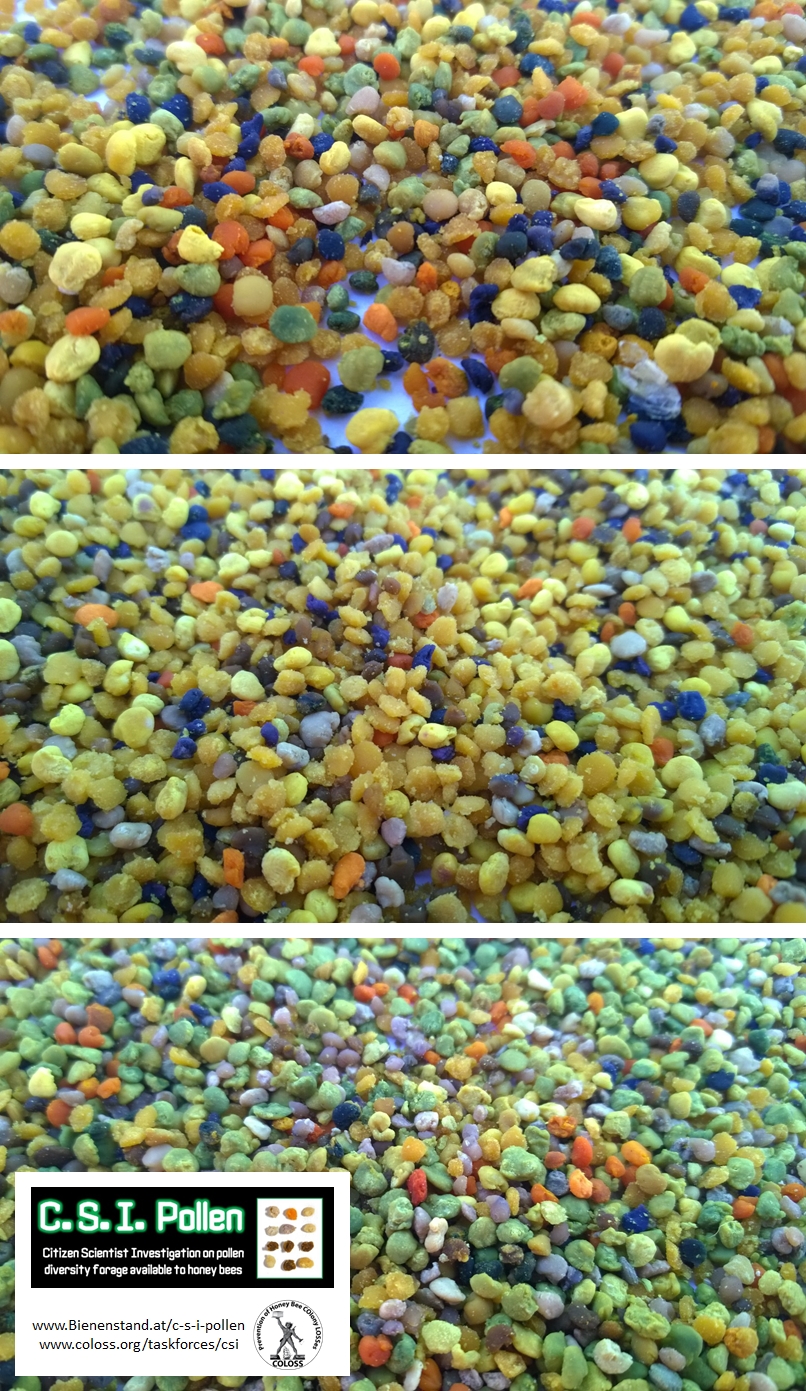
A complete series of pollen samples collected by three honey bee colonies in Vorarlberg, Austria.
Eine komplette Serie der von drei Bienenvölkern in Vorarlberg gesammelten Pollen-Proben.
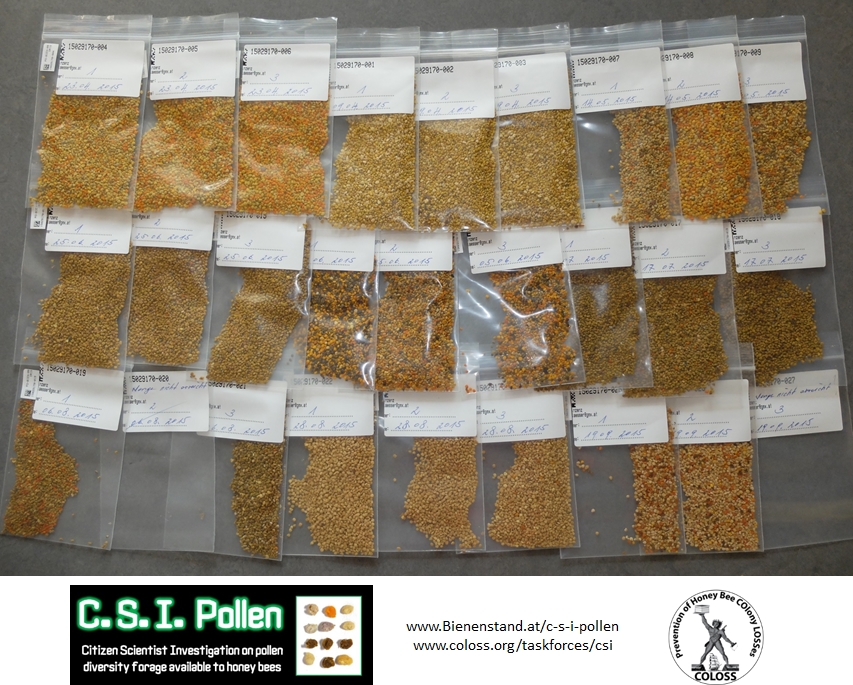
Another selection of C.S.I. Pollen participants from the Netherlands.
Weitere Bilder von C.S.I. Pollen Teilnehmern aus den Niederlanden.
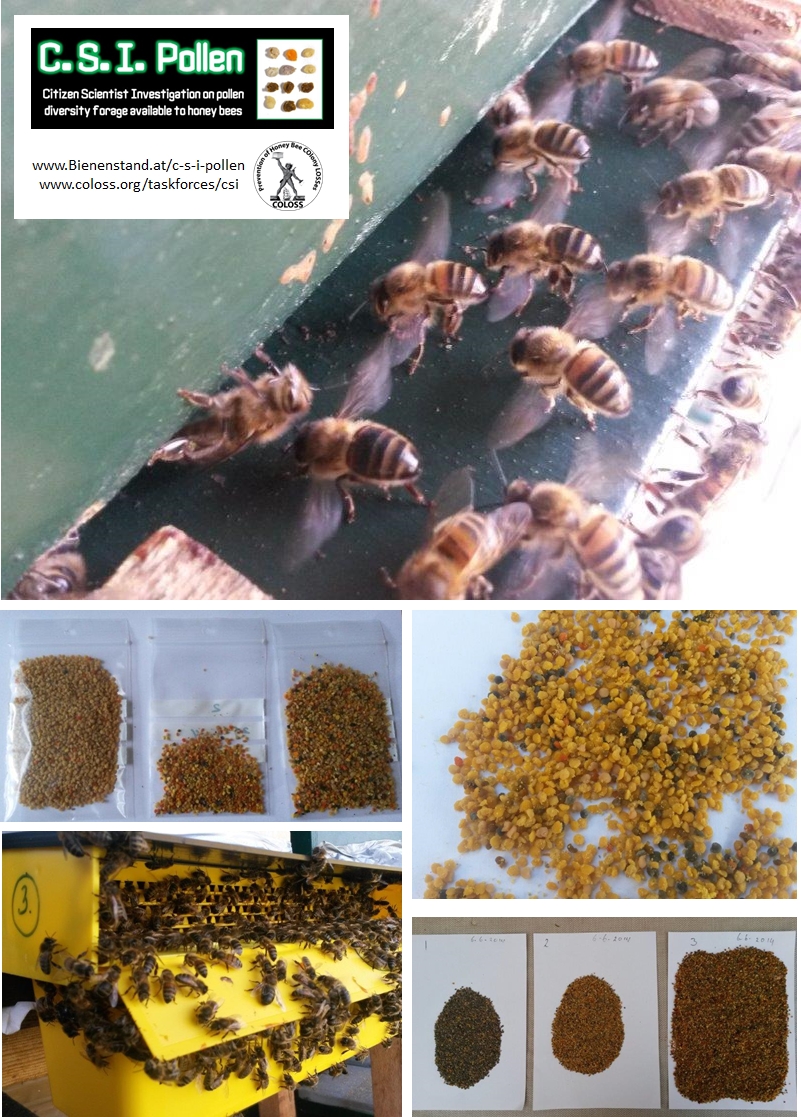
Pollen samples photographed by Citizen Scientist from the Netherlands. He also presents himself in a Portrait!
Pollenproben fotografiert von einem Citizen Scientist aus den Niederlanden. Dieser Teilnehmer hat auch einen Steckbrief von sich bereitgestellt!
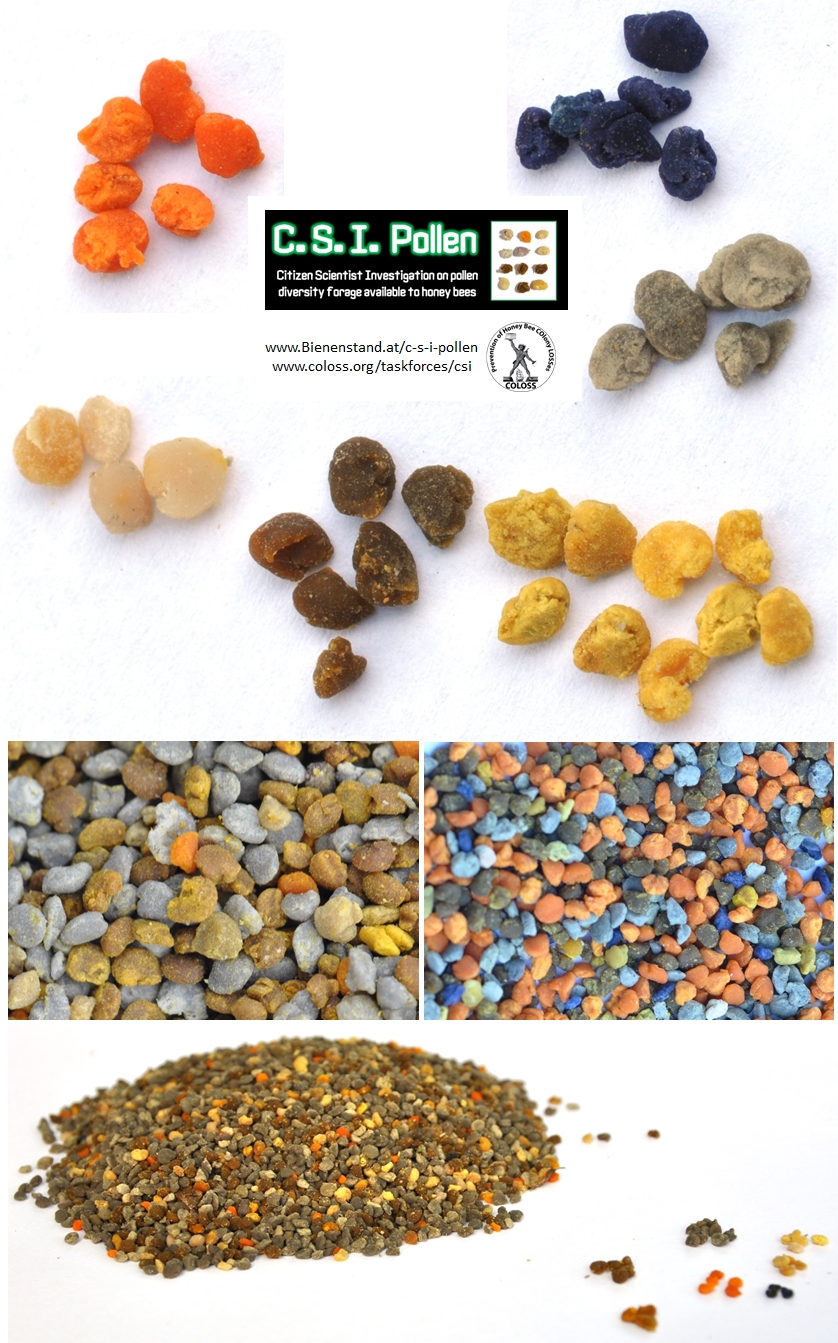
Pollen samples from Graz, Austria, early June 2015. All three colonies were placed next to each other, still they obviously did forage on completely different plants! The left and the middle pollen samples are dominated by the mountain ninebark (Physocarpus) whereas the third colony at the same time preferred to collect pollen from the honey locust (Gleditsia).
Pollenproben aus Graz, Anfang Juni 2015. Obwohl die Völker nebeneinander stehen, sammeln sie scheinbar an unterschiedlichen Pflanzen! Bei der linken und vor allem mittigen Pollenprobe dominiert Pollen vom Schneeball (Physocarpus), das Bienenvolk rechts sammelte hauptsächlich an der Gleditschie (Gleditsia, Lederhülsenbaum).
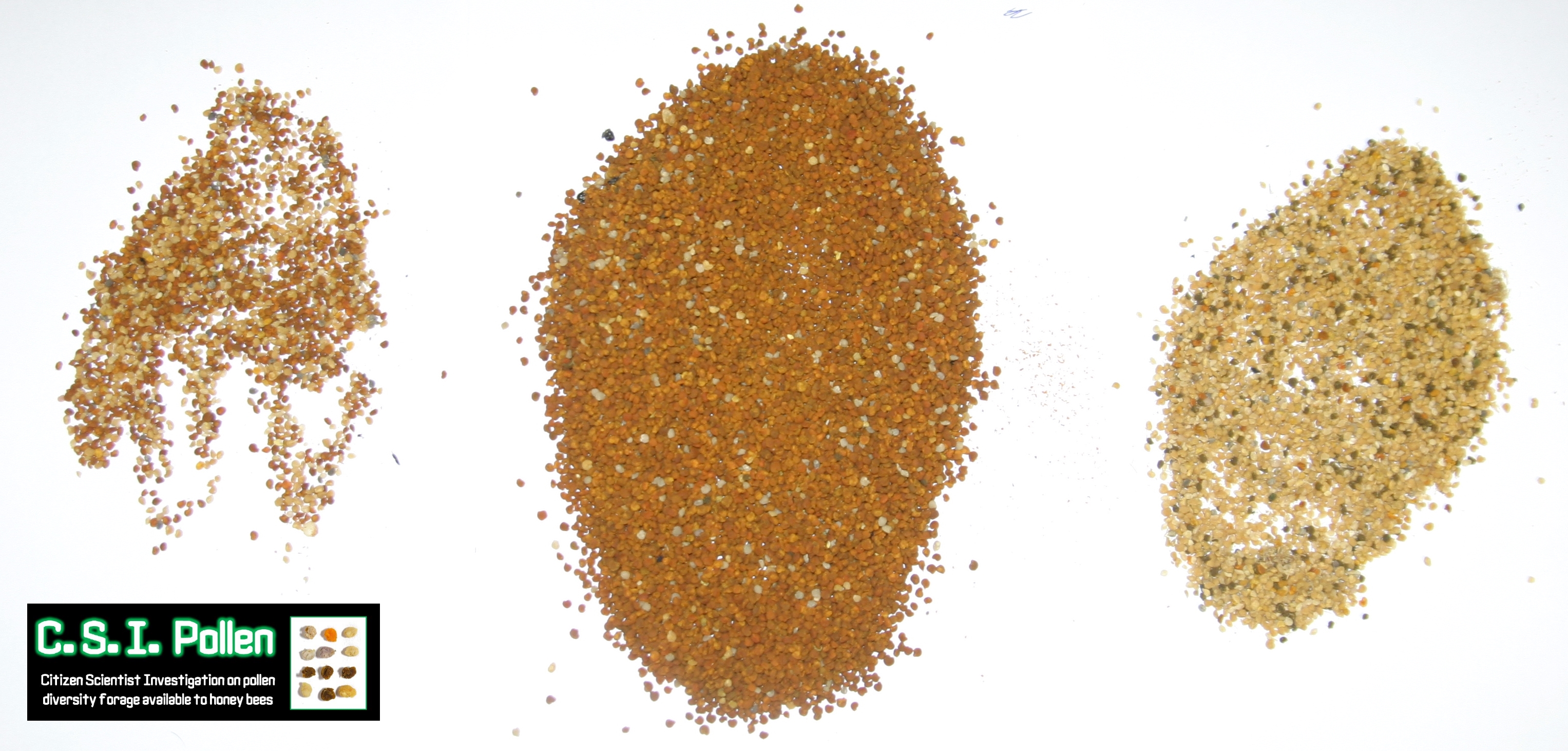
Same three colonies as above from Graz, Austria, mid September 2015. Pollendiversity or monofloral nutrition? Light microscopy revealed it is more than 99% ivy (Hedera helix) pollen in all three colonies).
Selbe drei Völker wie oben aus Graz, Mitte September 2015. Pollendiversität oder einseitige Ernährung? Die lichtmikroskopische Pollenanalyse hat ergeben, dass es sich jeweils um mehr als 99% Efeu Pollen (Hedera helix) handelt. 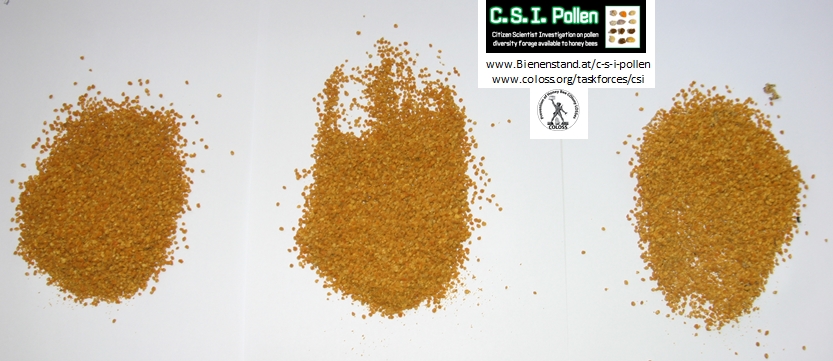
Some beekeepers report clustering of bees in front of the pollen trap – does anyone know how to prevent this? An international problem, pictures here from Germany, Sweden, Netherlands.
Manche Teilnehmer berichten von Trauben von Bienen vor den Fallen – weiß jemand wie man das verhindern kann? Ein internationales Problem, hier im Bild: Deutschland, Schweden, Niederlande.

The bee castle of an C.S.I. Pollen participant from Vienna, Austria. During great summer heat in August 2015, bees preferred to cluster outside.
Die Bienenburg eines C.S.I. Pollen Teilnehmers aus Wien. Bei der großen Hitze im August 2015 sind auch hier die Bienen ausgezogen.
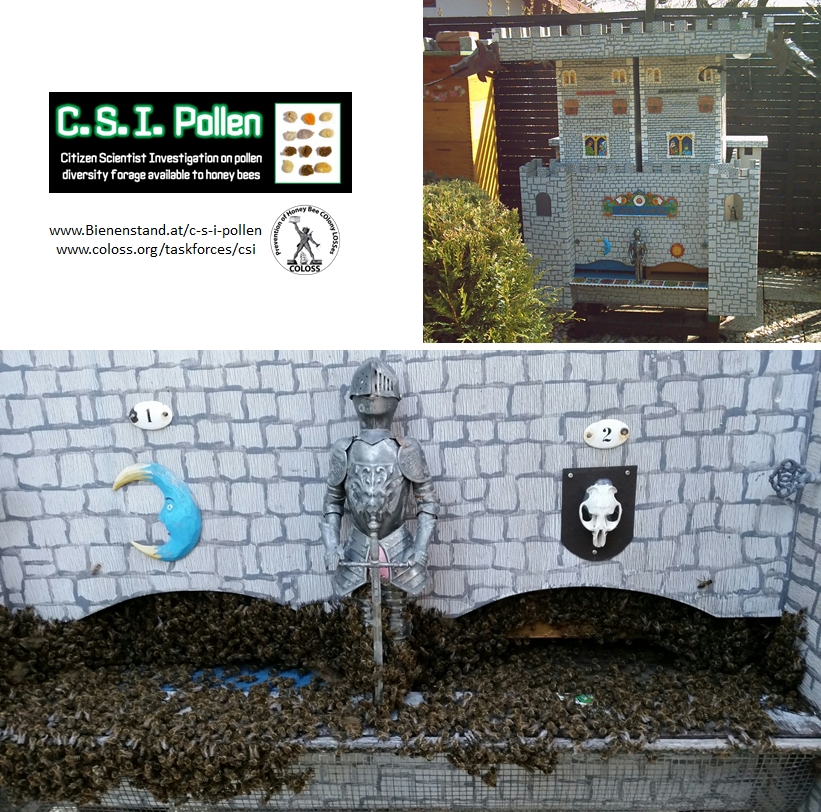
Sometimes, not always also seen at University of Graz apiary: As if the bees would know, pollen foragers steadily wait on top of the pollen trap untill I come to open the trap. Note that all have pollen pellets of the same colour in June 2015!
Manchmal, nicht immer auch bei den Völkern der Universität Graz: Als ob die Bienen es wüssten, warten die Pollensammlerinnen am Dach der Pollenfalle, bis ich Sie öffne! Beachten Sie auch, dass alle Pollenhöschen im Juni 2015 die selbe Farbe haben! 